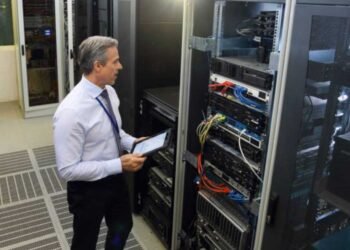Transitioning a company away from reliance on external energy sources, particularly the national grid, is an ambitious but increasingly feasible goal. This shift often involves adopting renewable energy solutions, improving energy efficiency, and implementing energy storage systems. The move not only promotes sustainability but also provides greater energy security, reduces operational costs, and aligns the company with emerging regulatory and environmental standards. Here’s a guide on how to make this transition effectively.
1. Assessing Current Energy Usage
The first step in reducing reliance on the national grid is to thoroughly assess your company’s current energy usage. Conduct an energy audit to understand where and how energy is being consumed. Identify the main sources of energy consumption, such as heating, cooling, lighting, and production processes. This data will provide a baseline from which you can develop a strategy to reduce grid dependency. Working with a company like Kast Energy can help you discover areas where you can improve.
Understanding peak energy usage times is also crucial. This information helps in planning the installation of renewable energy systems that can be optimized to meet your specific energy needs, potentially reducing the need for grid energy during these peak periods.
2. Adopting Renewable Energy Solutions
One of the most effective ways to reduce reliance on the national grid is to generate your own energy using renewable sources. Solar power is the most popular choice for many businesses, as photovoltaic (PV) panels can be installed on rooftops or unused land. Solar energy is scalable, relatively easy to install, and increasingly cost-effective. Wind energy is another option, particularly for companies located in windy regions. Depending on the scale of your operations, a combination of both solar and wind energy might be the best approach.
Investing in renewable energy not only decreases reliance on the grid but also protects your company from future energy price increases and potential supply disruptions. Over time, these systems can significantly reduce operating costs and provide a competitive advantage in a market that increasingly values sustainability.
3. Energy Storage and Management Systems
To truly become independent from the national grid, your company will need an effective energy storage system. Energy storage solutions, such as batteries, work with DC Power supplies to store excess energy generated by renewable sources during periods of low demand and use it when demand is high or when renewable generation is low. This is essential for maintaining a consistent power supply, especially for critical operations.
Advanced energy management systems can further optimize energy use. These systems can monitor energy production, storage levels, and consumption in real-time, automatically adjusting operations to make the most efficient use of available energy. For example, they can shift energy-intensive processes to times when renewable generation is high, reducing the need for grid power.
4. Improving Energy Efficiency
Reducing overall energy demand through efficiency measures is another critical step. Energy-efficient technologies, such as LED lighting, high-efficiency HVAC systems, and smart building controls, can significantly lower your energy needs. Retrofitting buildings with better insulation and energy-efficient windows can also reduce heating and cooling demands.
Process optimization, particularly in manufacturing and production, can further reduce energy consumption. For example, upgrading to more energy-efficient machinery or optimizing production schedules to align with renewable energy generation can lead to substantial savings.
5. Developing a Resilient Energy Strategy
To ensure that your transition away from grid reliance is successful and sustainable, develop a comprehensive energy strategy. This strategy should include short-term and long-term goals, such as the gradual increase of renewable energy capacity, continuous improvement in energy efficiency, and the integration of new technologies as they become available.
Consider potential challenges, such as the intermittency of renewable energy sources and the upfront costs of renewable energy systems and storage. Develop contingency plans to address these challenges, ensuring that your company can maintain operations even during periods of low renewable generation.
6. Financial Considerations and Incentives
The initial investment in renewable energy systems and energy-efficient technologies can be substantial, but various financial incentives and funding options can help offset these costs. Research available government grants, tax incentives, and financing options that support renewable energy and energy efficiency projects. Many countries offer attractive incentives to businesses that invest in sustainable energy solutions, making the transition more financially viable.
Conclusion
Moving your company away from reliance on the national grid is a forward-thinking strategy that offers numerous benefits, from cost savings to enhanced energy security and environmental stewardship. By carefully assessing your current energy usage, adopting renewable energy solutions, improving efficiency, and implementing advanced energy management systems, your company can achieve greater independence from external energy sources. This transition not only positions your business for long-term success but also contributes to a more sustainable and resilient energy future.












